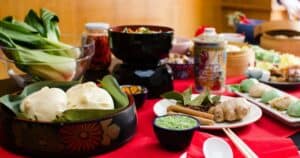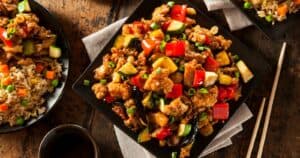Chinese cuisine is renowned worldwide for its bold, complex flavors. However, determining which regional style is the spiciest is an ongoing debate among foodies.
Two contenders often cited as the “spiciest” are the fiery cuisines of Szechuan and Hunan provinces. But which one truly packs more heat?
The Origin of Szechuan’s Signature Spiciness
Szechuan cuisine comes from China’s Szechuan province in the southwest. It’s characterized by liberal use of chili peppers and Szechuan peppercorns.
The combination creates a unique numbing and tingling heat that sets Szechuan food apart. While chili peppers add overt spiciness, Szechuan peppercorns contain oils that produce slight numbness or tingling.
Some sources suggest this unusual mouthfeel makes Szechuan cuisine seem hotter than other spicy regional styles like Hunan that rely solely on chilis for heat.
Hunan Cuisine – Spicy With a Sour Kick
Hunan province neighbors Szechuan in southeastern China. Hunan food shares Szechuan’s penchant for chili peppers but also has a pronounced sour taste.
Common souring agents in Hunan cooking include vinegar and fermented beans. This contrasts the umami or mild sweetness often found in Szechuan dishes.
The sourness of Hunan food helps cut through rich ingredients like pork or beef. It also balances the chili heat.
Comparing Chili Peppers and Spice Levels
Both Szechuan and Hunan cuisines use dried red chilis extensively. However, Hunan cooking favors the eye-watering petite chili pepper while Szechuan cuisine leans toward broader, darker chilis like the ancho.
Some speculate this gives Hunan cuisine a sharper, more intensely fiery edge over Szechuan’s slower building, oil-based heat.
However, the spiciness ultimately comes down to preparation. Using more chilis and spices amps up heat in any dish, whether Szechuan or Hunan influenced.
Signature Dishes Showcase Regional Styles
Certain dishes highlight the distinguishing features of each cuisine’s spiciness.
Iconic Szechuan Dishes
- Mapo Tofu – Soft tofu meets tingly Szechuan peppercorns and chili oil.
- Dan Dan Noodles – Loaded with chili oil and Szechuan pepper, these noodles have serious kick.
- Szechuan Boiled Fish – Fish fillets swimming in a steaming pool of chilis and aroma-packed spices.
Famous Spicy Hunan Dishes
- Chairman Mao’s Braised Pork – Pork belly braised until melt-in-your-mouth tender in a fiery sauce.
- Crispy Chili Chicken – Chicken crackling under a blanket of fried chilis.
- Spicy Stir-Fried Potatoes – Humble potatoes transformed by copious chilis, vinegar, and garlic.
The Verdict: It Depends on the Dish and Taster!
When it comes to Hunan vs. Szechuan
- For some, Szechuan’s lip-numbing peppercorns equal hotter heat.
- Others argue Hunan’s chili-centric dishes are more scorching.
In reality, spiciness is subjective and based on individual tastes and sensitivities. The best way to decide if Szechuan or Hunan is spicier is to try signature dishes from each region. Then determine which heat level and flavor profile suits your preferences.
With creative use of chilis and other spices, both Szechuan and Hunan cuisines can deliver equally thrilling and tongue-tingling burns. The regional styles may differ, but the joy of spicy Chinese flavors shines through.
So grab your favorite bowl or noodles, stir-fry, or braise and
FAQs
1. What type of chili peppers are used in Szechuan cuisine?
Common chili peppers used in Szechuan cooking include dried red chilis like arbol, ancho, and cayenne. The broad shape and moderate heat of these chilis give Szechuan food a slower building, oil-based spiciness.
2. What gives Hunan cuisine its signature spice and heat?
Hunan cuisine relies heavily on dried petite chili peppers. Their small size and fierce heat provide intense, eye-watering spiciness in Hunan dishes.
3. Does one cuisine use more chili peppers than the other?
Not necessarily. Both Szechuan and Hunan cuisines liberally employ dried red chilis. It’s the preparation method and types of chilis used that impact
4. What other spices contribute flavor in Szechuan cooking?
In addition to chili peppers, Szechuan peppercorns provide a unique numbing effect. Garlic, ginger, and fermented soybeans like doubanjiang offer pungent, savory tastes.
5. Why does Hunan cuisine have a pronounced sour flavor?
Hunan cooking uses plenty of vinegar and fermented beans to provide a tangy sour taste. This brightens richer ingredients and balances out the intense chili heat in Hunan dishes.
Let me know if you would like me to add or expand on any of these FAQs!





